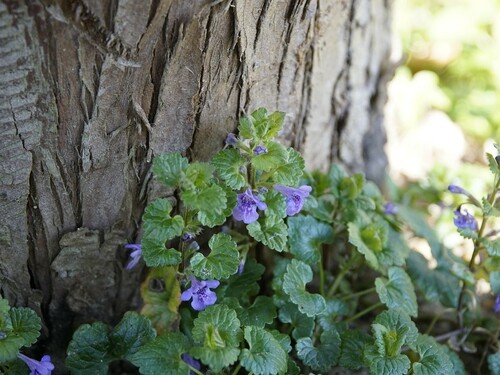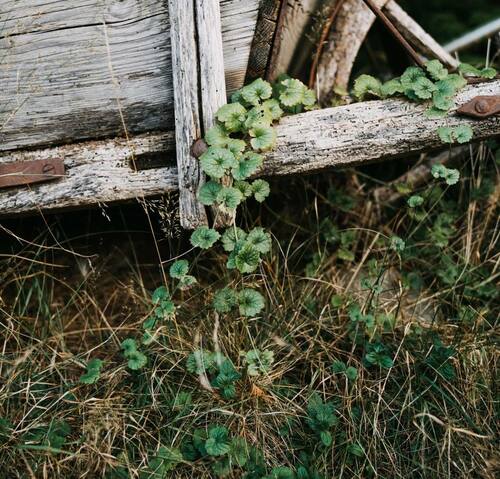Getting Rid of Ground Ivy in Your Landscaping
Understanding Ground Ivy: The Creeping Menace in Your Yard
Ground ivy , scientifically known as Glechoma hederacea , is a persistent and invasive weed that can quickly overtake your landscaping. Also referred to as “creeping Charlie,” “gill-over-the-ground,” “field balm,” or “Robin runaway,” this perennial plant can be a significant nuisance for homeowners and gardeners alike. In this comprehensive guide, we’ll explore the nature of ground ivy, its potential benefits and drawbacks, and effective methods for prevention and removal.
What is Ground Ivy?
Ground ivy is a low-growing, creeping plant belonging to the mint family. It features round, scalloped leaves and small, purplish-blue flowers. This hardy weed spreads rapidly through both seeds and stolons (horizontal stems), allowing it to form dense mats that can choke out desirable grass and plants.
The Great Debate: Should Ground Ivy Be Removed?

Ground Ivy with Purple Flowers Growing at a Tree Base – Image by beauty_of_nature from Pixabay
Before discussing removal techniques, it’s essential to consider whether ground ivy should be eliminated from your landscape. While often considered a nuisance, this plant does have some redeeming qualities:
Potential Benefits of Ground Ivy:
- Aesthetic Appeal: Can serve as an attractive ground cover in certain landscape designs
- Pollinator-friendly: Provides food for bees and other beneficial insects
- Medicinal Uses: Traditionally used in herbal remedies for colds and other ailments
- Culinary Applications: Can be used to flavor drinks or as an herb in cooking
Drawbacks of Ground Ivy:
- Aggressive Growth: Can quickly overtake lawns and gardens
- Competitive Nature: May strangle and outcompete desirable plants
- Difficult to Control: Requires constant maintenance to keep in check
- Potential Toxicity: Can be harmful if ingested in large quantities by pets
Unless you’re committed to regular maintenance and have a specific use for ground ivy, it’s generally recommended to remove it from your landscape to protect the health and appearance of your lawn and garden.
Preventing Ground Ivy: Creating an Inhospitable Environment
The best defense against ground ivy is a good offense. By creating conditions that discourage its growth, you can significantly reduce the likelihood of an infestation.
Key Prevention Strategies:
- Reduce Shade: Prune trees, shrubs, and hedges to increase sunlight exposure
- Manage Moisture: Water your lawn less frequently and improve drainage in problem areas
- Fill Bare Patches: Overseed empty spots in your lawn to prevent ground ivy establishment
- Maintain Lawn Health: Regular mowing , aeration, and fertilization create a robust turf that resists invasive weeds
Effective Methods for Removing Ground Ivy

Ground Ivy Growing on a Wooden Cart – Photo by Pascale Amez on Unsplash
When prevention fails and ground ivy takes hold in your landscape, you have several options for removal:
1. Herbicide Application
Using a selective herbicide can be an effective solution, especially for large infestations. However, exercise caution to avoid damaging desirable plants.
Tips for herbicide use:
- Choose products specifically labeled for ground ivy control
- Apply during peak growth periods (spring or fall) for maximum effectiveness
- Follow all manufacturer instructions and safety precautions
2. Manual Removal
For smaller areas or environmentally sensitive locations, hand-pulling can be an effective, albeit labor-intensive, method.
Steps for manual removal:
- Water the area to soften the soil
- Grasp the plant near the base and pull gently
- Remove all roots and runners to prevent regrowth
- Dispose of removed plants in sealed bags to prevent spread
3. Cultural Control Methods
Improving overall lawn health can help suppress ground ivy growth:
- Adjust soil pH to between 6.0 and 7.0
- Fertilize appropriately to promote grass growth
- Mow at the proper height for your grass species
4. Natural Remedies
Some homeowners prefer eco-friendly solutions:
- Borax solution: Mix 10oz of borax with 4oz of warm water and apply to affected areas
- Vinegar spray: Use horticultural vinegar (20% acetic acid) on sunny days for spot treatment
When to Seek Professional Help
Dealing with persistent ground ivy infestations can be challenging. If DIY methods prove ineffective or if you’re facing a large-scale problem, it may be time to consult a professional landscaper.
For residents in the San Francisco Bay Area, local landscaping companies can offer expert weed control and landscape management services. Their teams of experienced professionals can develop a customized plan to eliminate ground ivy and restore the beauty of your landscape.
Conclusion: Reclaiming Your Landscape from Ground Ivy
While ground ivy can be a formidable opponent, armed with the right knowledge and techniques, you can successfully manage and remove this invasive weed from your yard. By combining prevention strategies with targeted removal methods, you’ll be well on your way to maintaining a healthy, ivy-free landscape that you can enjoy for years to come.
For assistance with managing tree health in your landscape, contact us today!
Originally posted on January 30, 2020.


